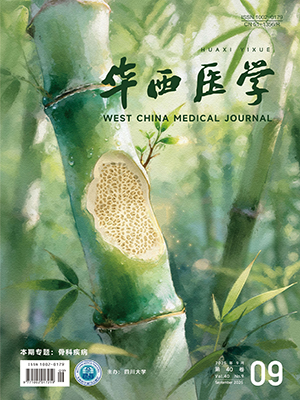| 1. |
Sabatini L, Atzori F, Revello S, et al. Intravenous use of tranexamic acid reduces postoperative blood loss in total knee arthroplasty. Arch Orthop Trauma Surg, 2014, 134(11): 1609-1614.
|
| 2. |
Martin JG, Cassatt KB, Kincaid-Cinnamon KA, et al. Topical administration of tranexamic acid in primary total hip and total knee arthroplasty. J Arthroplasty, 2014, 29(5): 889-894.
|
| 3. |
Balderi T, Carli F. Urinary retention after total hip and knee arthroplasty. Minerva Anestesiol, 2010, 76(2): 120-130.
|
| 4. |
Berbari EF, Hanssen AD, Duffy MC, et al. Risk factors for prosthetic joint infection: case-control study. Clin Infect Dis, 1998, 27(5): 1247-1254.
|
| 5. |
Karason S, Olafsson TA. Avoiding bladder catheterisation in total knee arthroplasty: patient selection criteria and low-dose spinal anaesthesia. Acta Anaesthesiol Scand, 2013, 57(5): 639-645.
|
| 6. |
Huang ZY, Ma J, Shen B, et al. General anesthesia: to catheterize or not? A prospective randomized controlled study of patients undergoing total knee arthroplasty. J Arthroplasty, 2015, 30(3): 502-506.
|
| 7. |
蔡东峰, 马俊, 黄泽宇, 等. 静脉联合吸入麻醉下不导尿全膝关节置换术安全性及有效性分析. 国际骨科学杂志, 2014, 35(5): 337-340.
|
| 8. |
Balderi T, Mistraletti G, D’angelo E, et al. Incidence of postoperative urinary retention (POUR) after joint arthroplasty and management using ultrasound-guided bladder catheterization. Minerva Anestesiol, 2011, 77(11): 1050-1057.
|
| 9. |
中华医学会骨科学分会. 中国骨科大手术静脉血栓栓塞症预防指南. 中华关节外科杂志: 电子版, 2009, 29(6): 602-604.
|
| 10. |
Russell RD, Huo MH. Apixaban and rivaroxaban decrease deep venous thrombosis but not other complications after total hip and total knee arthroplasty. J Arthroplasty, 2013, 28(9): 1477-1481.
|
| 11. |
Goodnough LT, Verbrugge D, Marcus RE. The relationship between hematocrit, blood lost, and blood transfused in total knee replacement. Implications for postoperative blood salvage and reinfusion. Am J Knee Surg, 1995, 8(3): 83-87.
|
| 12. |
Bong MR, Patel V, Chang E, et al. Risks associated with blood transfusion after total knee arthroplasty. J Arthroplasty, 2004, 19(3): 281-287.
|
| 13. |
Şükür E, Öztürkmen Y, Akman YE, et al. The effect of tourniquet and knee position during wound closure after total knee arthroplasty on early recovery of range of motion: a prospective, randomized study. Arch Orthop Trauma Surg, 2016, 136(12): 1773-1780.
|
| 14. |
Wang K, Ni SJ, Li ZC, et al. The effects of tourniquet use in total knee arthroplasty: a randomized, controlled trial. Knee Surg Sports Traumatol Arthrosc, 2016, 1-9.
|
| 15. |
Knight RM, Pellegrini VD. Bladder management after total joint arthroplasty. J Arthroplasty, 1996, 11(8): 882-888.
|
| 16. |
Miller AG, Mckenzie J, Greenky M, et al. Spinal anesthesia: should everyone receive a urinary catheter? A randomized, prospective study of patients undergoing total hip arthroplasty. J Bone Joint Surg Am, 2013, 95(16): 1498-1503.
|
| 17. |
文守琴, 李玲利, 陈佳丽, 等. 全膝关节置换术不安置尿管的可行性研究. 华西医学, 2014, 29(12): 2342-2343.
|
| 18. |
杨小春. 全膝关节置换术髌骨置换疗效的研究. 宁夏: 宁夏医科大学, 2013.
|
| 19. |
张捷, 徐梅, 王英丽, 等. 留置导尿对全麻单侧膝关节置换术患者尿路刺激症状的影响. 中华现代护理杂志, 2016, 22(27): 3951-3953.
|




